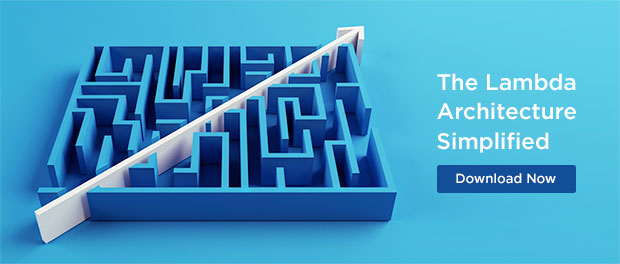
Modern businesses need to support an increasing variety of data workloads and uses cases that require both fault-tolerance and scalability. This has led to widespread adoption of the Lambda Architecture.
Lambda is designed to model everything that happens in a complex computing system as an ordered, immutable log of events. Processing the data (for example, totaling the number of web visitors or transactions) is completed as a series of transformations that output to new tables or streams.
SingleStore combines database and data warehouse workloads, enabling both transactional processing and analytics. Gartner refers to this as HTAP or hybrid transaction/analytical processing. SingleStore often fulfills the speed layer of the Lambda architecture, providing in-memory performance to ingest and process streaming data. In our experience with Lambda implementations, we find that most organizations get hung up on details of the Lambda Architecture, introducing unnecessary technologies and workarounds to fit within the model. It doesn’t have to be this way.
Free Guide: The Lambda Architecture Simplified
To make sense of the Lambda Architecture and get you on track to a successful implementation, we are launching a new guide: The Lambda Architecture Simplified. This guide demystifies complexity surrounding the Lambda Architecture, and will reframe the way you think about the model by providing simplified data frameworks and real world use cases.
You’ll learn
- What defines the Lambda Architecture, broken down by each layer
- How to simplify the Lambda Architecture by consolidating the speed layer and batch layer into one system
- How to implement a scalable Lambda Architecture that accommodates streaming and immutable data
- How companies like Comcast and Tapjoy use Lambda Architectures in production

-Search_feature.png?height=187&disable=upscale&auto=webp)




